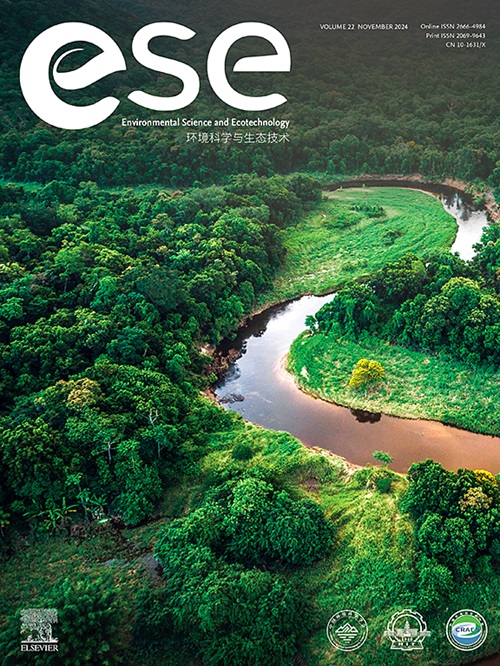Causal-inference machine learning reveals the drivers of China's 2022 ozone rebound
IF 14.3
1区 环境科学与生态学
Q1 ENVIRONMENTAL SCIENCES
引用次数: 0
Abstract
Ground-level ozone concentrations rebounded significantly across China in 2022, challenging air quality management and public health. Identifying the drivers of this rebound is crucial for designing effective mitigation strategies. Commonly used methods, such as chemical transport models and machine learning, provide valuable insights but face limitations—chemical transport models are computationally intensive, while machine learning often fails to address confounding factors or establish causality. Here we show that elevated temperatures and increased solar radiation, as primary meteorological drivers, collectively account for 57 % of the total ozone increase, based on an integrated analysis of ground-based monitoring data, satellite observations, and meteorological reanalysis information using explainable machine learning and causal inference techniques. Compared to the year 2021, 90 % of the stations reported an increase in the Formaldehyde to Nitrogen ratio, implying a growing sensitivity of ozone formation to nitrogen oxide levels. These findings highlight the significant causal role of meteorological changes in the ozone rebound, urging the adoption of targeted ozone mitigation strategies under climate warming, particularly through varied regional strategies that consider existing anthropogenic emission levels and the prospective increase in biogenic volatile organic compounds. This identification of causal relationships in air pollution dynamics can support data-driven and accurate decision-making.

因果推理机器学习揭示了中国2022年臭氧反弹的驱动因素。
2022年,中国地面臭氧浓度大幅回升,对空气质量管理和公众健康构成挑战。确定这种反弹的驱动因素对于设计有效的缓解战略至关重要。常用的方法,如化学运输模型和机器学习,提供了有价值的见解,但面临局限性-化学运输模型是计算密集型的,而机器学习通常无法解决混淆因素或建立因果关系。通过使用可解释的机器学习和因果推理技术对地面监测数据、卫星观测和气象再分析信息进行综合分析,我们发现,气温升高和太阳辐射增加作为主要的气象驱动因素,共同占臭氧增加总量的57%。与2021年相比,90%的监测站报告甲醛与氮的比率增加,这意味着臭氧形成对氮氧化物水平的敏感性越来越高。这些发现强调了气象变化在臭氧反弹中的重要因果作用,敦促在气候变暖的情况下采取有针对性的臭氧减缓战略,特别是通过考虑现有人为排放水平和生物源性挥发性有机化合物预期增加的各种区域战略。这种对空气污染动力学因果关系的识别可以支持数据驱动和准确的决策。
本文章由计算机程序翻译,如有差异,请以英文原文为准。
求助全文
约1分钟内获得全文
求助全文
来源期刊

Environmental Science and Ecotechnology
Multiple-
CiteScore
20.40
自引率
6.30%
发文量
11
审稿时长
18 days
期刊介绍:
Environmental Science & Ecotechnology (ESE) is an international, open-access journal publishing original research in environmental science, engineering, ecotechnology, and related fields. Authors publishing in ESE can immediately, permanently, and freely share their work. They have license options and retain copyright. Published by Elsevier, ESE is co-organized by the Chinese Society for Environmental Sciences, Harbin Institute of Technology, and the Chinese Research Academy of Environmental Sciences, under the supervision of the China Association for Science and Technology.
 求助内容:
求助内容: 应助结果提醒方式:
应助结果提醒方式:


